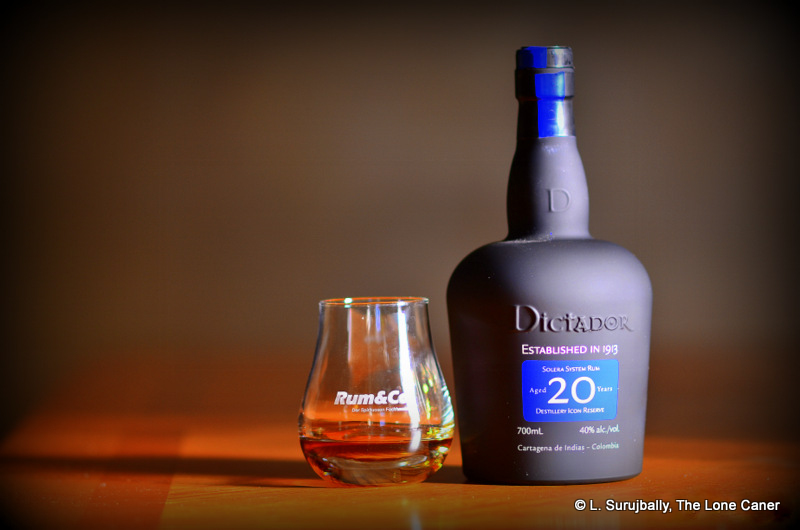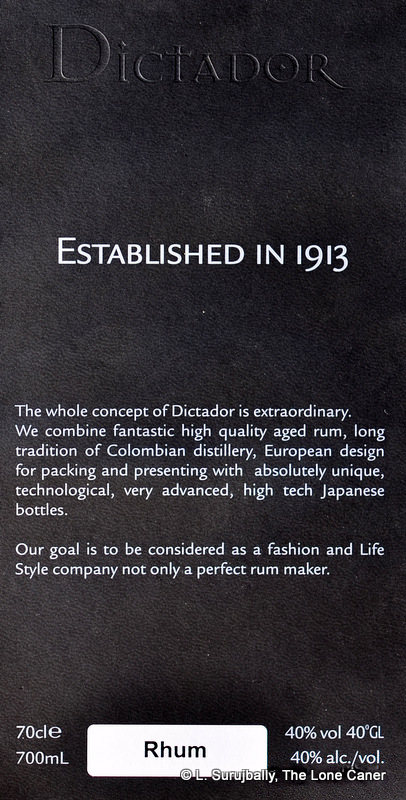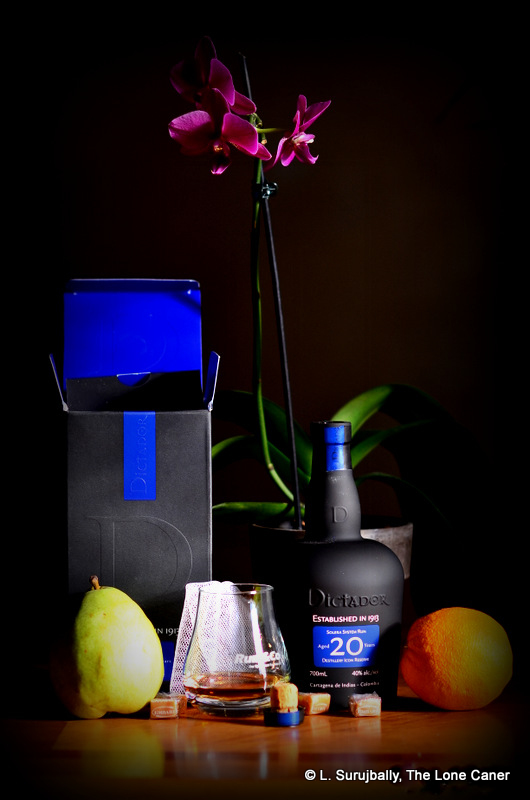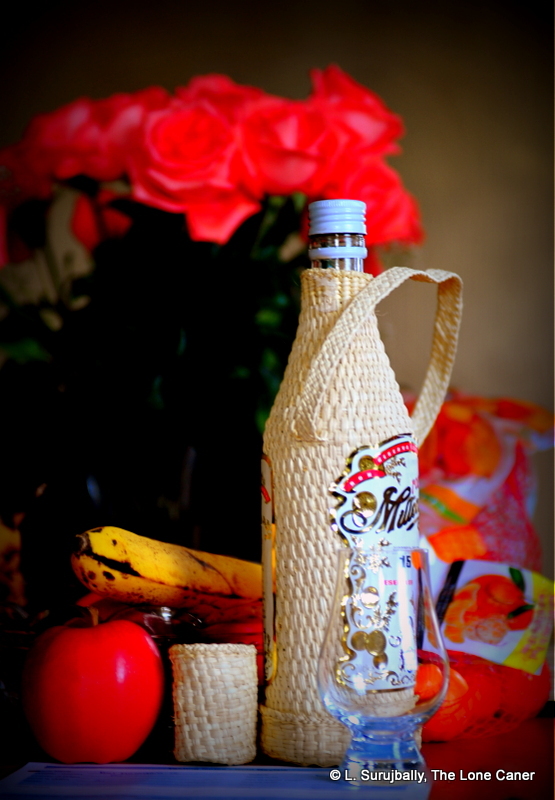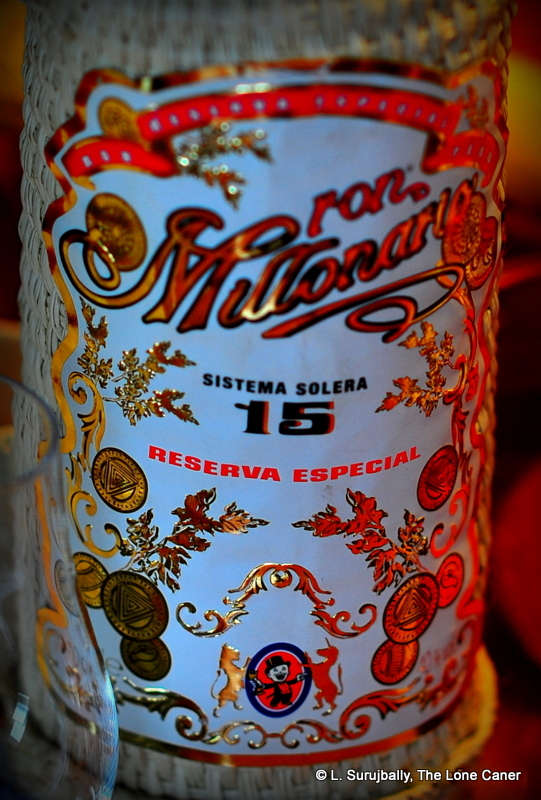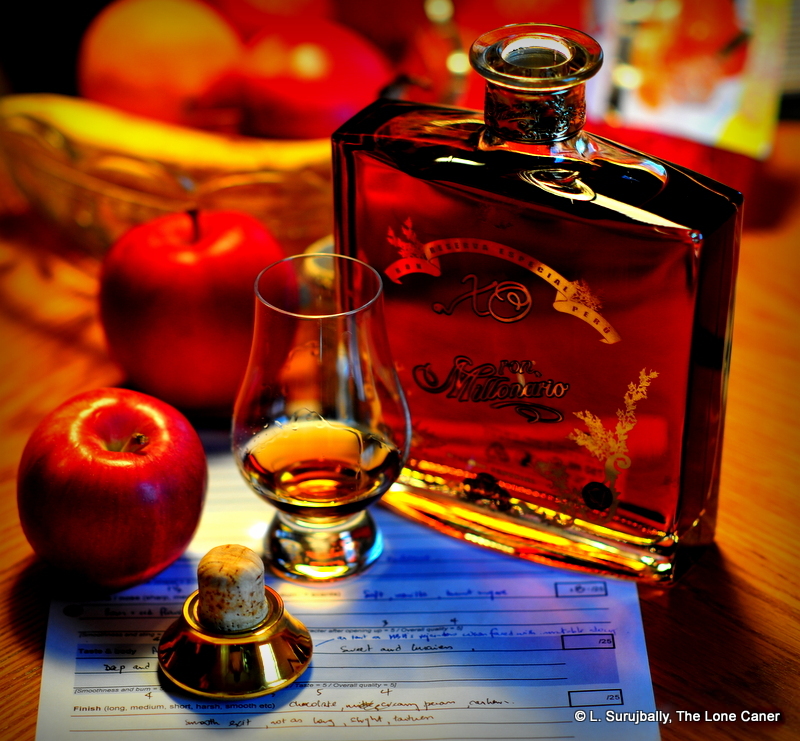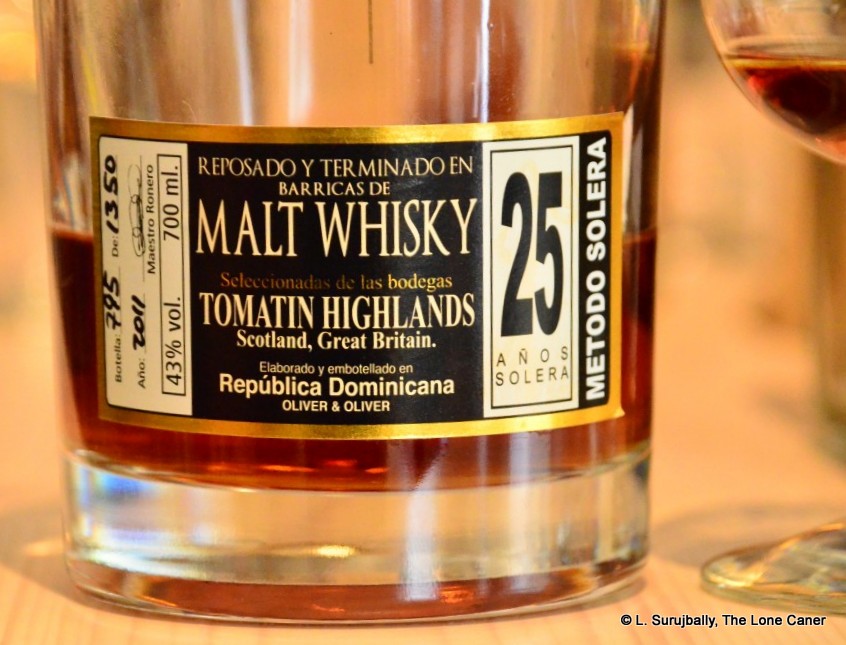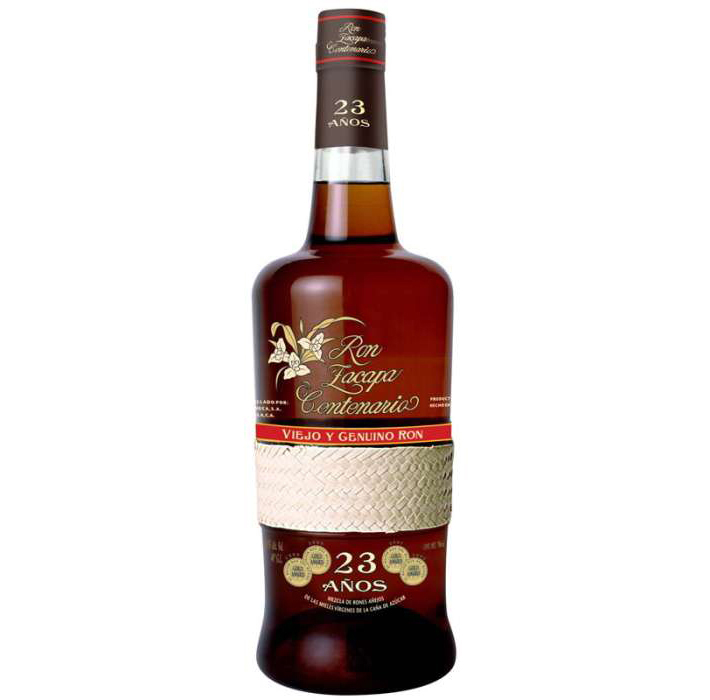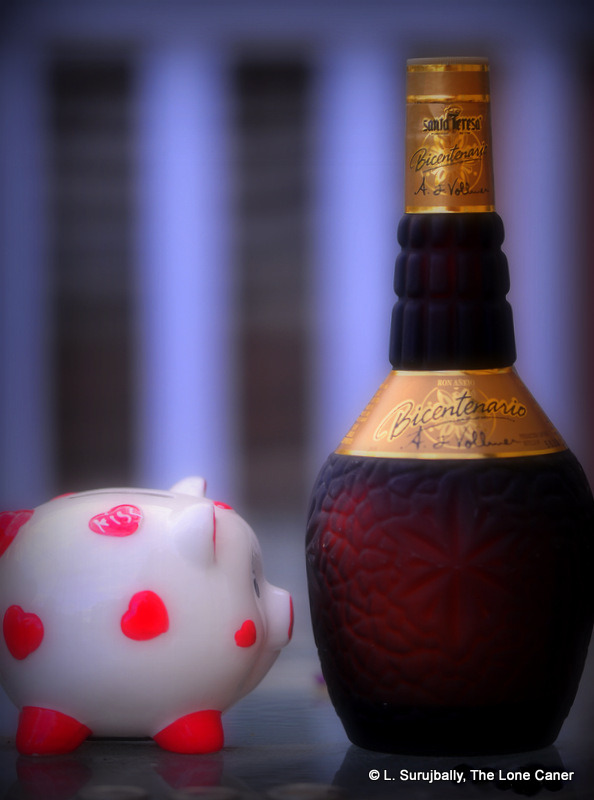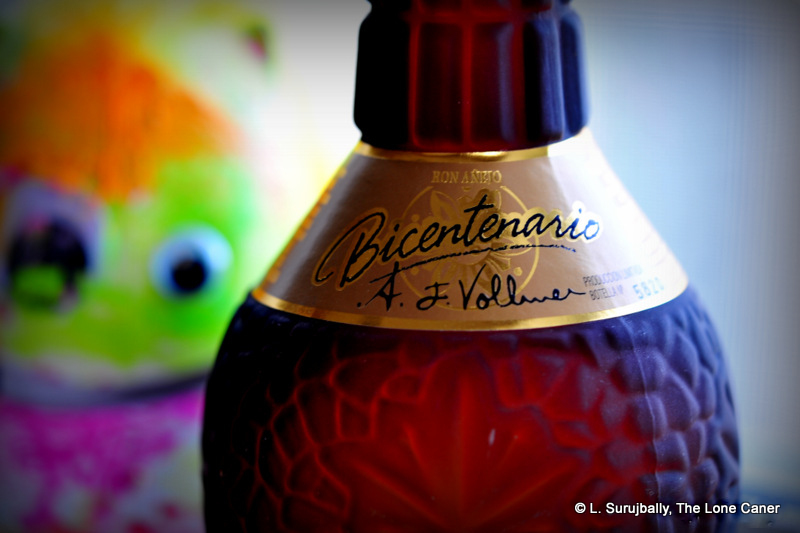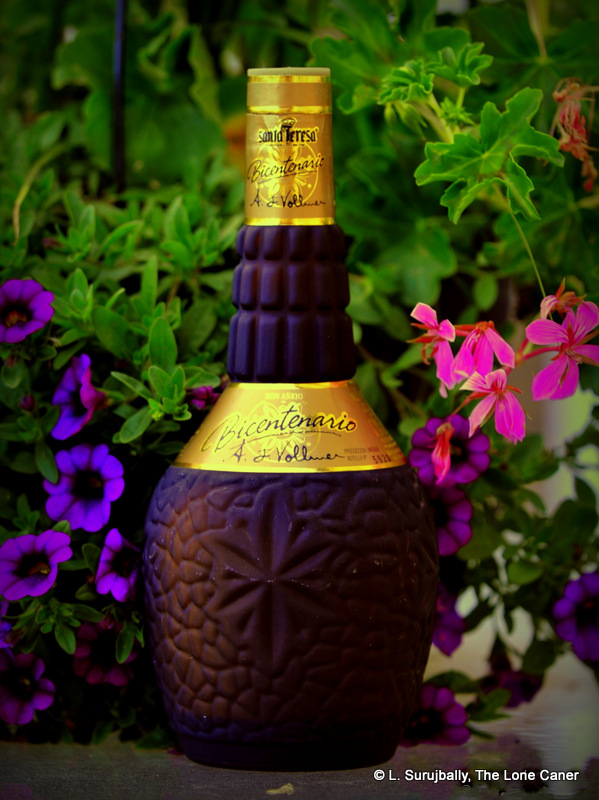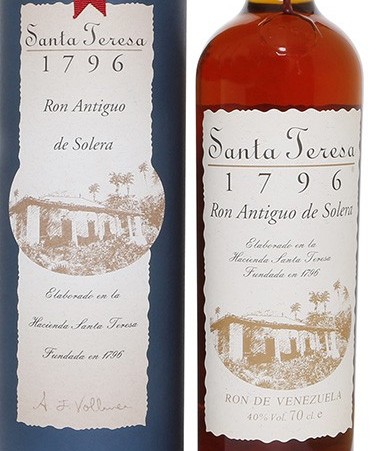A Millonario by another name, and as lovely.
Soleras as a rule tend toward the smooth and sweet side, and have a rather full body redolent of all sorts of interesting fruity flavours. My maltster friends regard this type of drink the way they would a sherry bomb (or a disrobed virgin, if one desperate enough could be found), with a mixture of hidden liking and puritan disdain. Still, after having had two fairly dry products in as many weeks, perhaps it was time to relax in a perfumed boudoir instead of the sere desert air. And because the Ron Cartavio XO was from Peru and a solera, I tried it together with the Ron Millonario Solera 15 and the Millonario XO which also hail from there, to see how it stacked up.
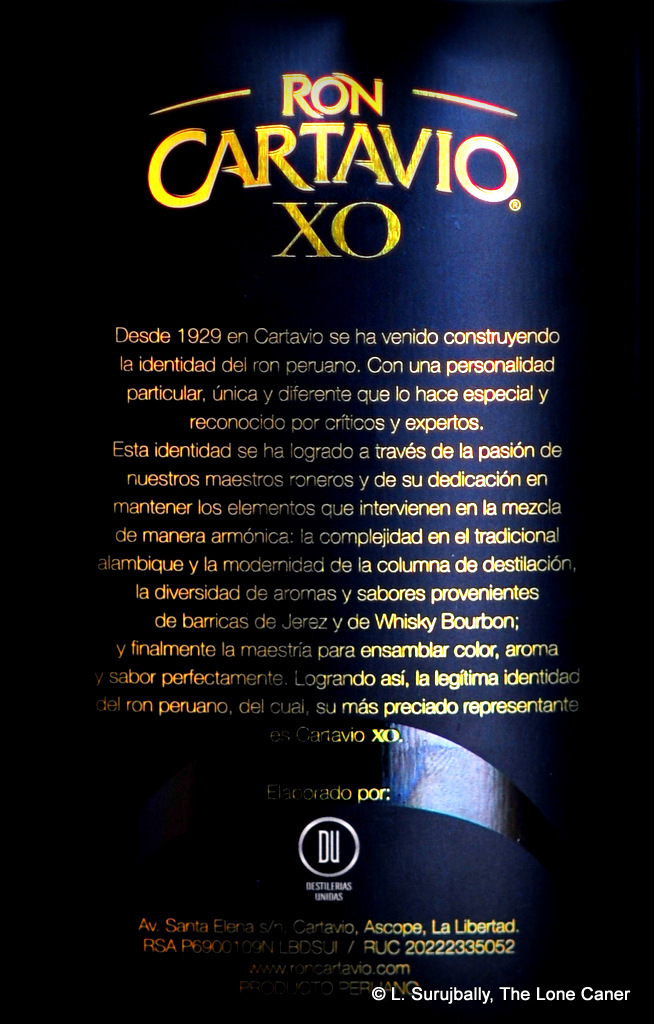 The Cartavio XO is pretty much the top of the line made by the company and is priced to match . It arrived in a black tin can and had a wooden tipped cork fixed into place by the twisted wire one might look for in a champagne…nice touch. Liked the bottle too…tapering, blocky, rounded shoulders, absolutely minimal design esthetic, and etched in gold (the tin can had most of the info, which was as it should be.
The Cartavio XO is pretty much the top of the line made by the company and is priced to match . It arrived in a black tin can and had a wooden tipped cork fixed into place by the twisted wire one might look for in a champagne…nice touch. Liked the bottle too…tapering, blocky, rounded shoulders, absolutely minimal design esthetic, and etched in gold (the tin can had most of the info, which was as it should be.
Smelling this was an exercise in repressed romanticism. Luscious is not a word that would be out of place to describe it. Creamy, almost like a mild citrus ice-cream, quite smooth and gentle on the nose. Apricots, cherries, vanilla, with just enough background of oaken tannins to provide some character. These scents mellowed gently into flower blossoms – in spite of its depth, the nose had a certain soft, clean brightness to it, like the skin of a sleepy baby after being freshly washed and powdered. It was without a doubt better than the Solera 15, but interestingly enough, it lacked some of the complex pungency that so elevated the Millonario XO.
The feel on the tongue was similarly rich and pleasant, though perhaps a shade more acerbic than the Millonario, but beyond that, quiet and heavy and quite aromatic. Here again is a rum that takes its time, being in no hustling rush to get the sipping experience over with. At 40%, there wasn’t going to be any aggro, no yobbish pummelling on the palate, and indeed, from that perspective, I wasn’t expecting any. The rum sang of vanilla and fruit (peaches and dried apricots), dark chocolate, sherry, nuts and a very faint vegetal note, all of which solidified into a rich and serene taste close to the fullness of honey (if not quite so thick).
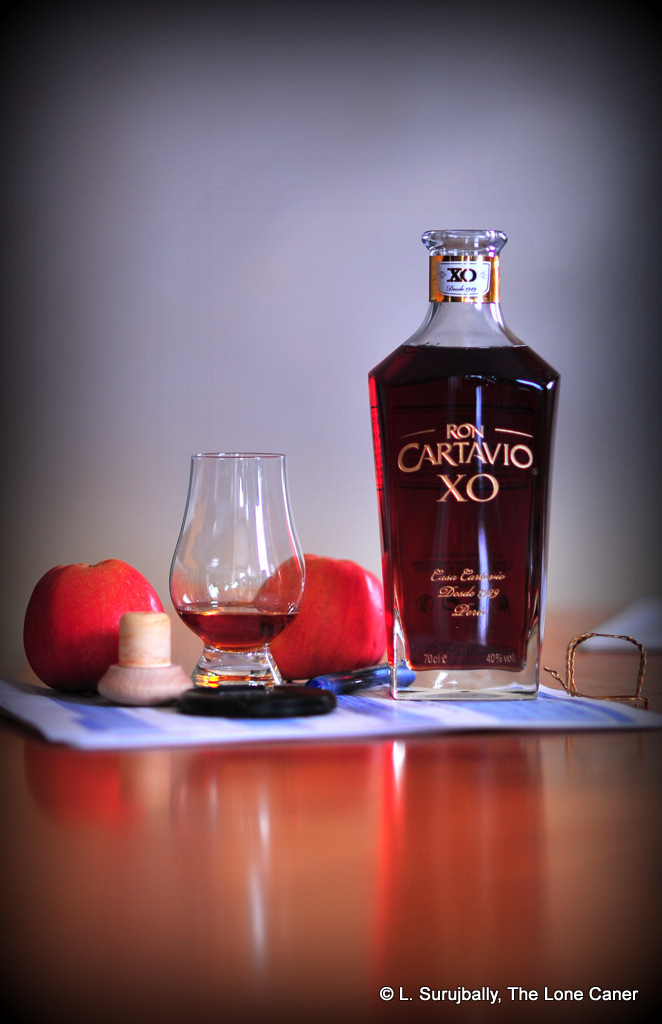 The one thing it is not quite good at is the exit. Medium long, hints of nuts, caramel, a sweet-salt tang, with a closing flirt of nutmeg. Faintly dry, but not unpleasantly so – the fragrant, almost humid rush of closing scents married well with that profile, yet try it against the Millonario and see if it doesn’t quite come up to that standard. Sure it’s solid and has a pleasant finish (some would sigh beatifically and say “awesome”), yet perhaps it is a shade too quiet and polished and does not demonstrate any kind of singular, individualistic character all its own, that said it was a walk-on-water rum – it reminded me more of a liqueur (a very good one, mind), and here I thought there were similarities to other well-made drinks of some age and real quality, like the St Nicholas Abbey 12 year old, or the El Dorado 25, which were so well put together (and, unfortunately, so sweet) that they lost that sense of individuality exemplified by their own younger siblings. An issue worth remarking on.
The one thing it is not quite good at is the exit. Medium long, hints of nuts, caramel, a sweet-salt tang, with a closing flirt of nutmeg. Faintly dry, but not unpleasantly so – the fragrant, almost humid rush of closing scents married well with that profile, yet try it against the Millonario and see if it doesn’t quite come up to that standard. Sure it’s solid and has a pleasant finish (some would sigh beatifically and say “awesome”), yet perhaps it is a shade too quiet and polished and does not demonstrate any kind of singular, individualistic character all its own, that said it was a walk-on-water rum – it reminded me more of a liqueur (a very good one, mind), and here I thought there were similarities to other well-made drinks of some age and real quality, like the St Nicholas Abbey 12 year old, or the El Dorado 25, which were so well put together (and, unfortunately, so sweet) that they lost that sense of individuality exemplified by their own younger siblings. An issue worth remarking on.
Another point I’d like to make is this: the taste profile of the two XOs is extraordinarily similar. In fact, the two are so close together that I wondered whether Fabio Rossi of Rum Nation didn’t source his rum from Cartavio (for the record, he hedged when asked). It would take real effort to taste them side by side and know right off which was which. I’d say that the Millonario has the upper hand based on a slightly better nose, but in all other respects, these two excellent soleras are on par.
The Cartavio brand of rums was originally made in the coastal town of that name, just north of Lima: sugar cane grows in the area and has been since 1891, though the company was founded in 1929 – this XO is an 80th anniversary edition, quite limited in production. The parent company is Distilerias Unidas SAC, and they use molasses as the raw ingredient combined with a continuous fermentation process, utilizing a John Dore pot still and a continuous still.
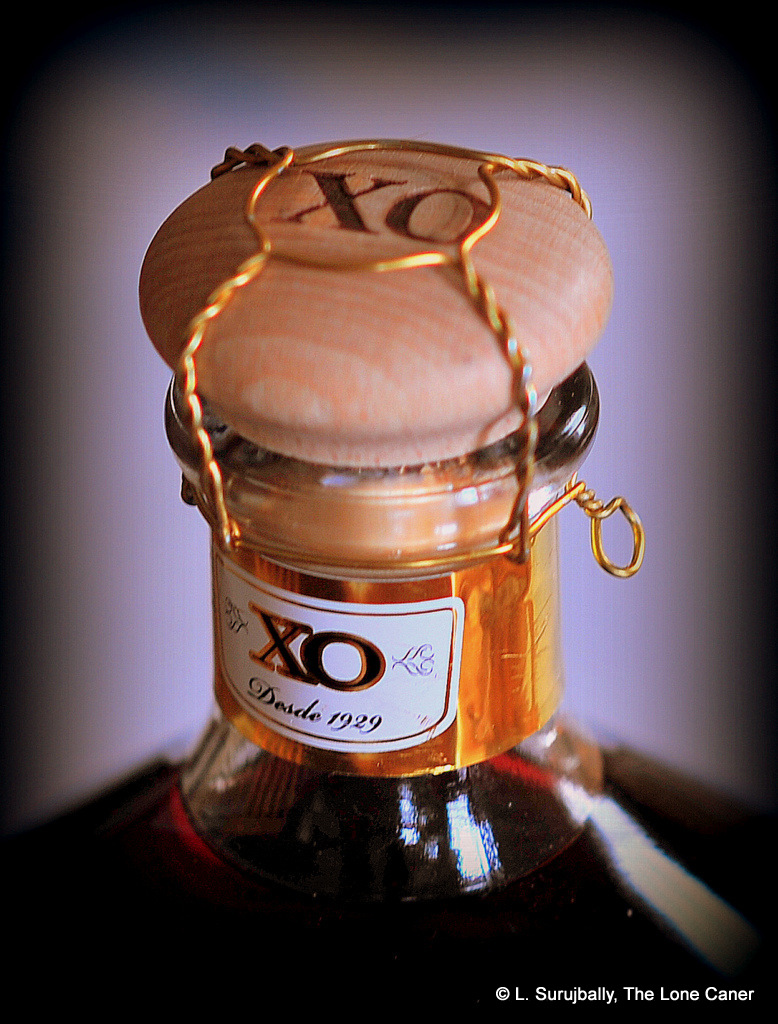 Let’s sum up, then. Soft, pungent, all-round lovely, and the taste and palate being the best thing about it. I imagine you can make a cocktail with this rum. What I can’t imagine is why. The Cartavio XO may be among the best examples of passive aggression ever seen in the rum world, because clearly the distillers don’t want you to mix it (and my own take – you shouldn’t).. By the time you hit to the bottom of this baby, you’ll still be scratching your brow, wondering what the hell that last tiny hint of savour actually was. It really is that good.
Let’s sum up, then. Soft, pungent, all-round lovely, and the taste and palate being the best thing about it. I imagine you can make a cocktail with this rum. What I can’t imagine is why. The Cartavio XO may be among the best examples of passive aggression ever seen in the rum world, because clearly the distillers don’t want you to mix it (and my own take – you shouldn’t).. By the time you hit to the bottom of this baby, you’ll still be scratching your brow, wondering what the hell that last tiny hint of savour actually was. It really is that good.
In fine, this is a rum that is quiet, gentle, and flows without fuss or turmoil to a serene conclusion. It is a rural country stream, chuckling dreamily over rocks and burbling to its destination with no agenda – all it wants is to please, and it succeeds. It lacks the testosterone fury of a full- or overproof rum, and avoids the blandness of more commercial rums that sell by the tanker load: drinking this rum and revelling in its unaggressive and unassuming sophistication is something like loving another repressed person like yourself, dearly…and waiting for the kiss that never quite comes when you want it, but is going to happen, eventually, nevertheless — and be worth the wait when it does.
(#150. 88/100)
Other Notes
- 2024 Video recap available using this link.
- On the tin enclosure and on the website, Cartavio note that the rum is an 18 year old made in the solera method, aged in white oak barrels (some from Slovenia, how cool is that?) but caution must be exercised in what the age statement really means: is it a blend of rums originating from a solera whose average age is eighteen (unlikely, since the math wouldn’t support that); is it a blend of rums averaging eighteen years which then went into a solera process; is it a solera rum that has been in the process for 18 years (my choice for most likely); or is it a solera blend of rums that was then aged for another eighteen years? I simply can’t get resolution on the matter: and it illustrates the issue with pinpointing the true age of a solera rum. For my money, the oldest part of this blend is eighteen, not the youngest. However, note that Josh Miller in early 2016, remarked in his review of the lineup that there is “no rum younger than 18 years in the blend.” And Matt Pietrek, in a piece on Cartavio, wrote in December 2015 that it was also a true 18 year old.
- According to wikipedia, Cartavio rums are now made in Aruba. I’m unclear whether “made” means “aged”, “bottled” or both. My bottle makes no such mention, by the way.

